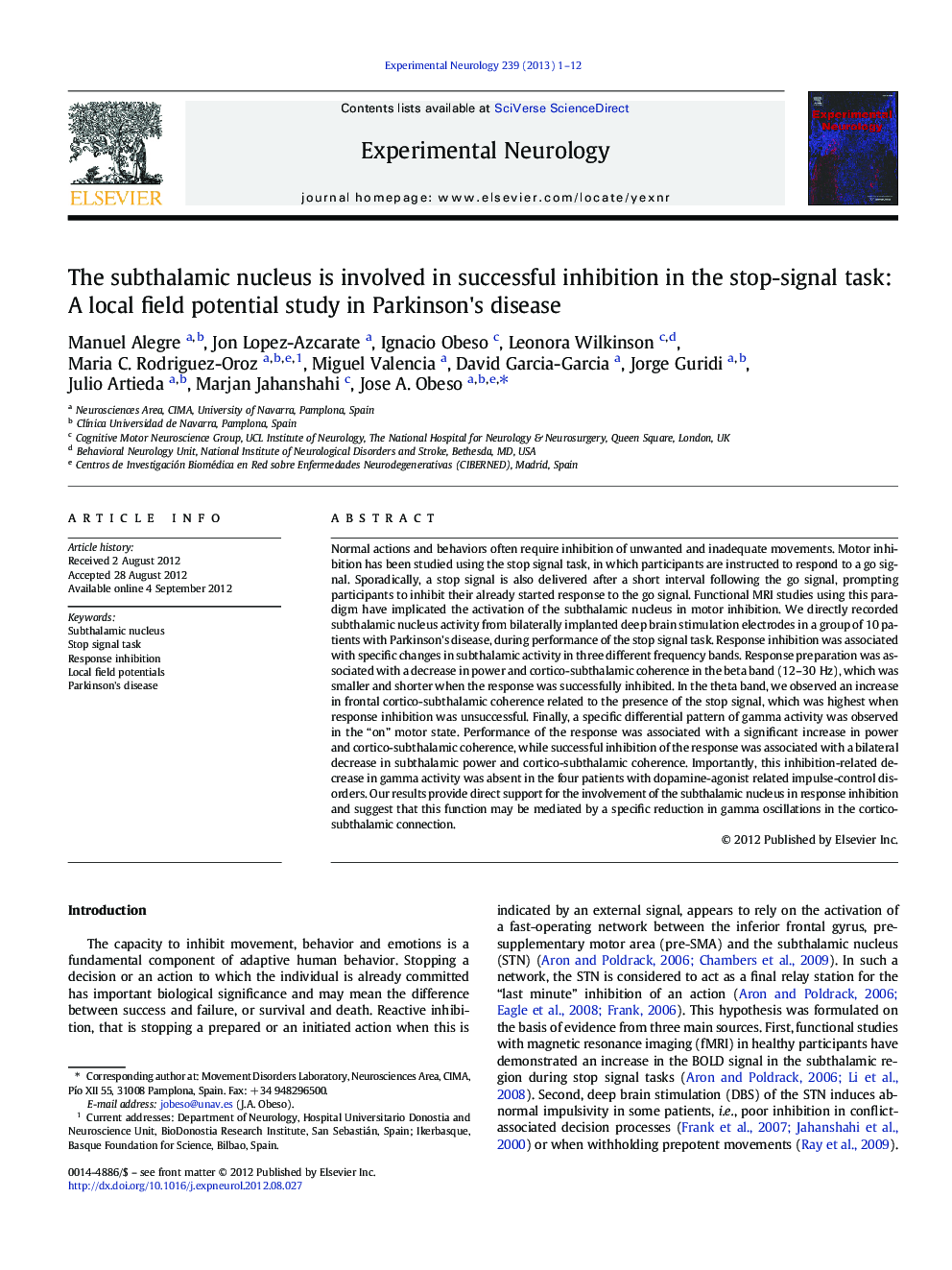| کد مقاله | کد نشریه | سال انتشار | مقاله انگلیسی | نسخه تمام متن |
|---|---|---|---|---|
| 6018464 | 1580193 | 2013 | 12 صفحه PDF | دانلود رایگان |
Normal actions and behaviors often require inhibition of unwanted and inadequate movements. Motor inhibition has been studied using the stop signal task, in which participants are instructed to respond to a go signal. Sporadically, a stop signal is also delivered after a short interval following the go signal, prompting participants to inhibit their already started response to the go signal. Functional MRI studies using this paradigm have implicated the activation of the subthalamic nucleus in motor inhibition. We directly recorded subthalamic nucleus activity from bilaterally implanted deep brain stimulation electrodes in a group of 10 patients with Parkinson's disease, during performance of the stop signal task. Response inhibition was associated with specific changes in subthalamic activity in three different frequency bands. Response preparation was associated with a decrease in power and cortico-subthalamic coherence in the beta band (12-30Â Hz), which was smaller and shorter when the response was successfully inhibited. In the theta band, we observed an increase in frontal cortico-subthalamic coherence related to the presence of the stop signal, which was highest when response inhibition was unsuccessful. Finally, a specific differential pattern of gamma activity was observed in the “on” motor state. Performance of the response was associated with a significant increase in power and cortico-subthalamic coherence, while successful inhibition of the response was associated with a bilateral decrease in subthalamic power and cortico-subthalamic coherence. Importantly, this inhibition-related decrease in gamma activity was absent in the four patients with dopamine-agonist related impulse-control disorders. Our results provide direct support for the involvement of the subthalamic nucleus in response inhibition and suggest that this function may be mediated by a specific reduction in gamma oscillations in the cortico-subthalamic connection.
⺠We studied changes in subthalamic activity in a stop signal paradigm in 10 Parkinson patients. ⺠Theta cortico-subthalamic coherence was linked to the presence of a stop signal. ⺠Successful inhibition of the response was associated with a gamma power and coherence decrease. ⺠This gamma decrease was absent in the 4 patients with impulse-control disorders. ⺠Our findings support the direct involvement of the subthalamic nucleus in response inhibition.
Journal: Experimental Neurology - Volume 239, January 2013, Pages 1-12
